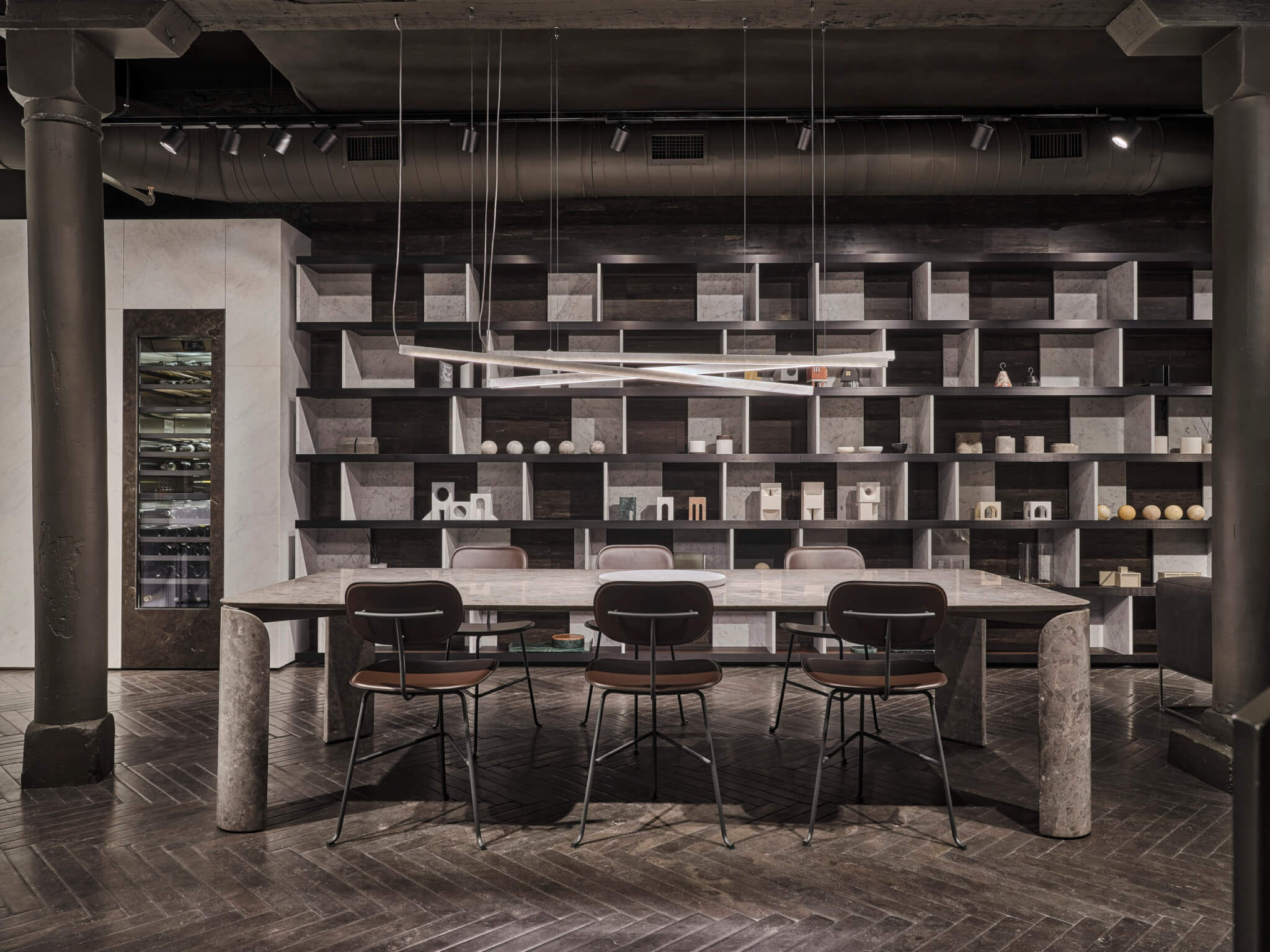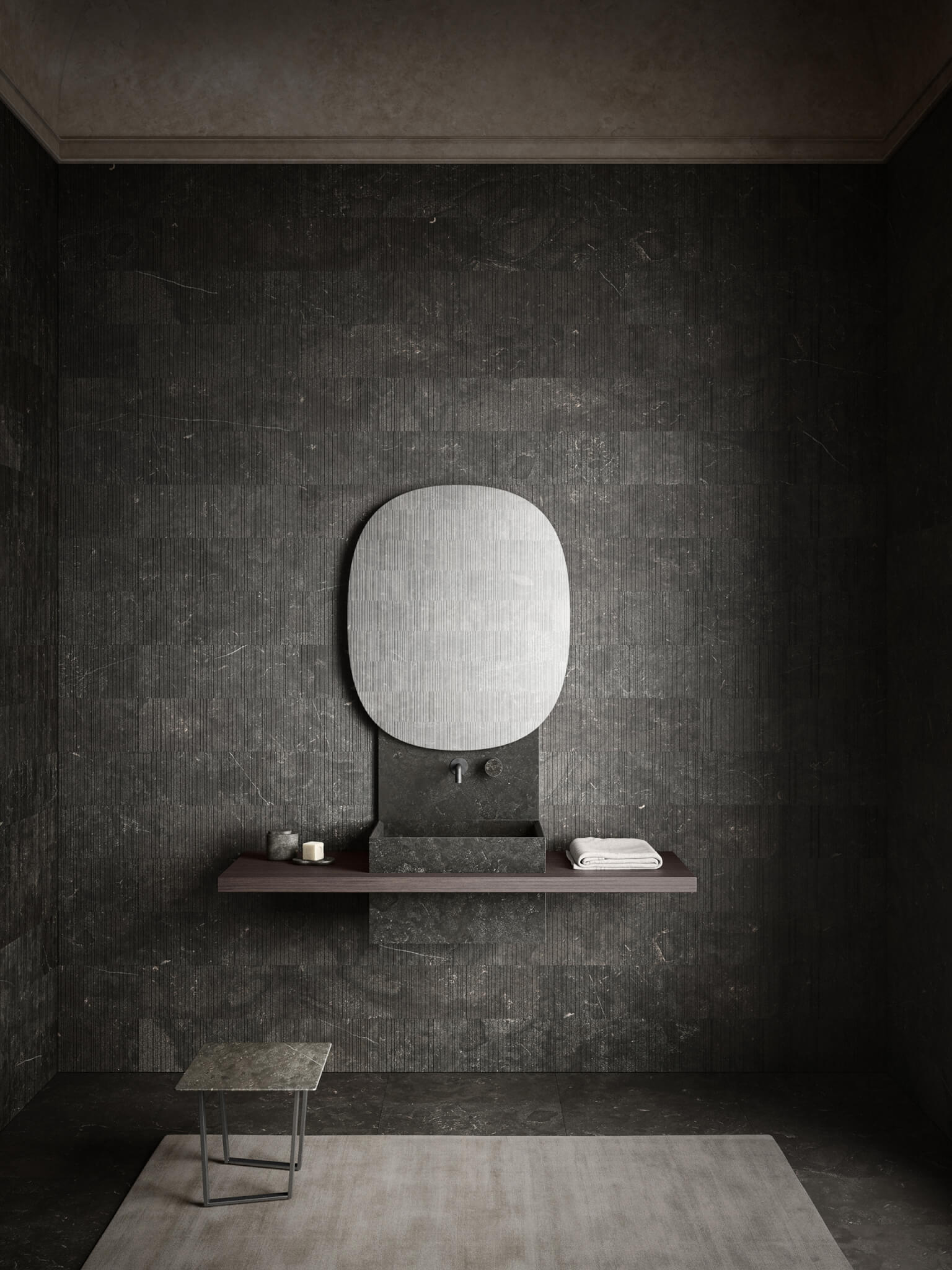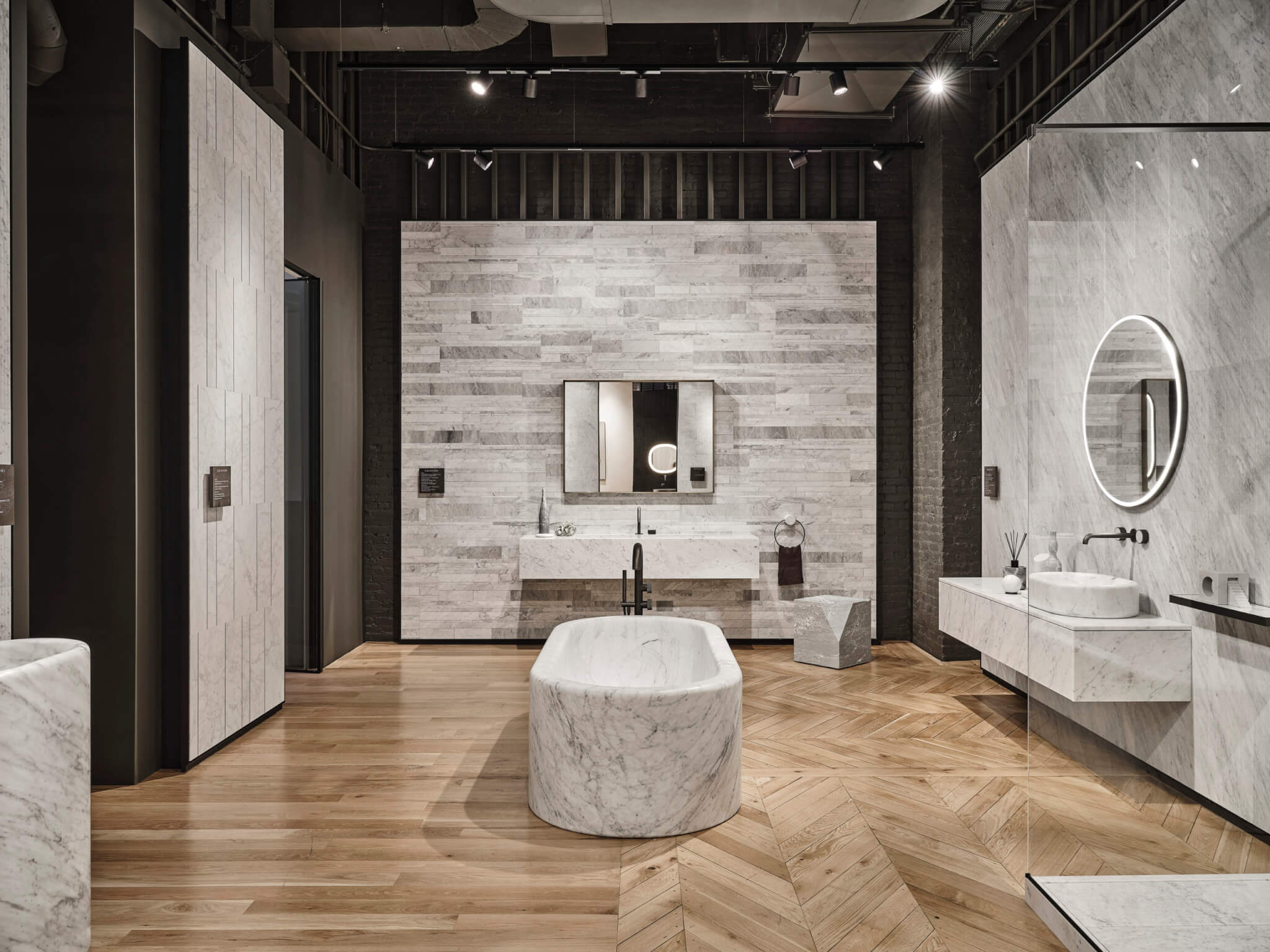AN Interior in conversation with Glenn Pushelberg
Last month, over 700 members of the design community descended on Soho to celebrate the opening of Salvatori’s first U.S. showroom. In recent years, the Italian stone company has grown in scale and notoriety due to a growing line of bathroom and home decor products produced through partnerships with established figures in the A&D community like Piero Lissoni, Kengo Kuma, and John Pawson, among others. For its debut New York space, Salvatori CEO Gabriele Salvatori landed on one of these trusted experts, global design studio Yabu Pushelberg, to establish the brand’s Italian identity within the context of this posh New York neighborhood.
AN Interior sat down with Glenn Pushelberg, founding partner of Yabu Pushelberg, to discuss the new space and the role of product design within his booming, eponymous firm.

Sophie Aliece Hollis: You’re calling in today from New York. Are you based here or in Toronto?
Glenn Pushelberg: That’s the million-dollar question. We started our firm about 100 years ago in Toronto. That was 1980. Then, 20 years ago, we got bored, so we decided to open a studio in New York City. It took us years to make money here, but it changed our lives. Nowadays we live in both New York and Toronto; we commute. We have beautiful staff in both places.
SAH: Is one office bigger than the other?
GP: No, they’re each about 60 people. It’s important to us to have people around us that we love and care for, so we built a lovely community of people in both cities that are kind of similar to one another.

SAH: How did you and your partner come together to start this practice?
GP: We met at design school in Toronto. Then, a couple of years later, we ran into each other on the street, and we were both working humbly out of our homes. I was tired of looking at my refrigerator all day long, so we decided to go in on a studio space together. After that, we started working on each other’s projects and it got too complicated to divide it all up, so we formed a little company. It was never really about building a business; we were always focused on design and finding the right people to let us do what we love.
The firm evolved over time. In the 1980s, we were mostly retail store designers. We did some nice work in Canada. Then we ended up with the cosmetic floor of Bergdorf’s, some work at Barneys, and the downtown Tiffany store. Those projects were our entrance into America. In 2000, we won a competition to design the new W Hotel in Times Square. The owner, who’s from Toronto, continued to give us new projects and that’s when we evolved into hotel experts. In a capsule, that’s how we became us.

SAH: When did you begin to introduce product design into your business?
GP: At one point about ten years ago we asked ourselves how our work could be better. We decided to hire an industrial designer to design furniture for our big hotel projects in order to set us apart from other interior design firms. We started with Canadians because there’s such wonderful design education in Canada. Unfortunately, many manufacturers left the country, so we began to show our portfolio to some big Italian companies and, lo and behold, we started designing products for the Molteni’s, B&B Italia, and Fantini. This operation has been snowballing, and we now have ten industrial designers in-house as well as a textile designer.
SAH: Is that how you met Gabriele Salvatori?
GP: Gabriele actually came knocking on our door over 15 years ago to sell us stone for an interior design project. Then, about five years ago, we reconnected with him in New York, and he asked us to design a bathroom system, which we did. We’ve continued to design products for him; we’ve got some stone faucets and a few other things in the pipeline for this year.
What we love about working with Salvatori is that, in Italy, there are two kinds of producers. Massive family-owned corporations are impressive and credible, but the country also has a number of smaller, second-generation, family-run companies that are heartfelt and sincere about moving design forward. They work from passion, so we’ve enjoyed working with Salvatori at this scale because with them we can continue to experiment with our work.

SAH: How does that experimentation manifest itself in the design of Salvatori’s new Soho showroom?
GP: I think the reason Gabriele hired us for this job was because of our history in New York. We’ve been here for over 20 years, and we have a feel for the city and the neighborhood. I can remember when Soho was rough, when nothing was there. So, our idea for the design was to get back to that feeling of being unfinished, away from all the new and polished aesthetics you find in Soho today. We wanted the very clean, precise Italian bathroom and wall systems to be in conversation with the rawness of what the neighborhood used to be. “Unfinished finished” is what I’d call it. The columns are chipped, the wood floor is patchy. About two weeks ago, Gabriele wanted to darken the floor to contrast the lighter Salvatori stone, but we decided to leave it as is—the mismatched meeting of the herringbone and straight boards helps to preserve the history of the place.
SAH: How does one experience this unfinished, finished aesthetic?
GP: We designed a series of rooms at differing scales within the space. The circulation is very asymmetrical: In order to get to the next, you have to wander and weave, almost rhythmically. You go from a small space to a medium-sized one while you’re moving from light marble to dark and then dark to medium. It’s like putting cheese out for the mice.



